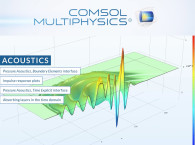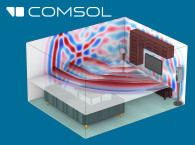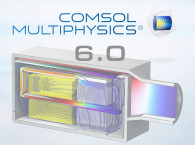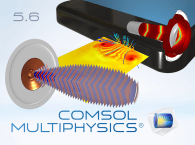
Attendees at the COMSOL Conference 2017 Boston enjoyed a sneak preview of new software features, technical panel discussions on medical and acoustics simulation, minicourses, and presentations of papers and posters on cutting edge multiphysics modeling. In a captivating exchange of knowledge around the latest trends in simulation and modeling, COMSOL provided attendees with a sneak preview of current and future developments of the software.
“Our customers are at the forefront of innovation behind the products that will shape our future,” says Littmarck. “We work tirelessly to support their efforts by increasing the modeling power of the COMSOL software and by making collaboration among simulation experts and their colleagues the core of everything we do. This annual event is our opportunity to connect and exchange knowledge within the COMSOL community on multiphysics modeling,” stated Svante Littmarck, President and CEO, COMSOL, during his keynote address.
The most noteworthy updates in COMSOL Multiphysics 5.3a scheduled to be released in the fourth quarter of 2017, include:
- Acoustics and acoustic-structure interactions based on a hybrid boundary element-finite element (BEM-FEM) method
- Impulse response for ray acoustics
- Magnetostatics based a hybrid boundary element-finite element (BEM-FEM) method
- Shape memory alloy (SMA) materials for structural analysis
- Revolutionary new method for capacitively-coupled plasma (CCP) simulations
- Support for 3DConnexion SpaceMouse devices
- Turbulent-flow enabled inlets for CFD simulations
- 150 new materials and 1300 new material properties in the Material Library product
- More than 60 substrate material properties for RF and microwave analysis

“We are excited to now offer acoustics analysis based also on the boundary element method. It’s a great addition that many of our users have been waiting for”, says Mads Jensen, Technical Product Manager, Acoustics, at COMSOL. “By combining boundary element, finite element, and ray acoustics analysis in a multiphysics environment, our users get unprecedented modeling power. Users can now efficiently analyze the full range of acoustic frequencies from the lowest bass notes to ultrasound. Not to mention all the possible multiphysics couplings.”
 The COMSOL Conference features a robust technical program with seven events held around the world. The first stop in Boston attracted about 300 attendees. Over one hundred user presentations were given. Panel discussions on medical and acoustics simulation were highly anticipated new additions to the program. The exhibit featured technical computing software and services, hardware providers, and HPC specialists among others. A wide span of breakout sessions included minicourses and technical workshops on topics ranging from heat transfer, and structural mechanics, to meshing, solvers, optimization, postprocessing, cluster computing, and more.
The COMSOL Conference features a robust technical program with seven events held around the world. The first stop in Boston attracted about 300 attendees. Over one hundred user presentations were given. Panel discussions on medical and acoustics simulation were highly anticipated new additions to the program. The exhibit featured technical computing software and services, hardware providers, and HPC specialists among others. A wide span of breakout sessions included minicourses and technical workshops on topics ranging from heat transfer, and structural mechanics, to meshing, solvers, optimization, postprocessing, cluster computing, and more.www.comsol.com/conference/boston






